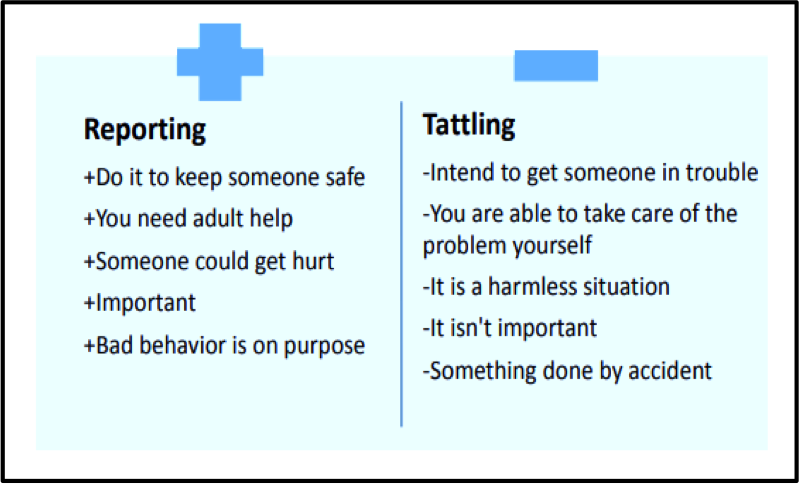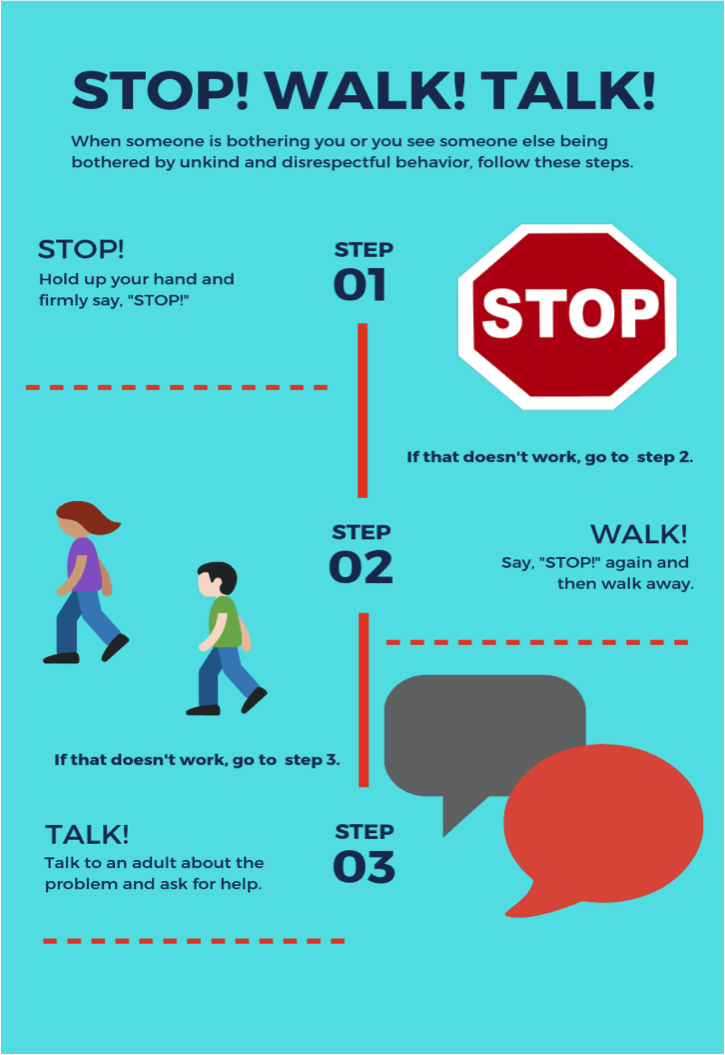Teaching Assertiveness to Counter Meanness
A MiddleWeb Blog
 Take a minute and think of the character traits you want to help your students develop. When I asked friends they offered a good assortment including kind, happy, helpful, hard-working, intelligent, friendly and more.
Take a minute and think of the character traits you want to help your students develop. When I asked friends they offered a good assortment including kind, happy, helpful, hard-working, intelligent, friendly and more.
A Google search pulled up the “six pillars” of character education (trustworthiness, respect, responsibility, fairness, citizenship, and caring).
But a trait I think of as among the most important was not found anywhere. That trait, as you probably surmised from the title of this piece, is assertion. Teaching students to be assertive in a kind, honest, and forthright manner is as important as teaching them the traits mentioned above.
When Kids Are Mean
Recently I wrote about the problems and solutions for “helicopter parenting.” It is a topic that that also fits in this post because, if parents consistently step in to solve problems for their children, children cannot learn to solve them independently. I want to help my students become strong problem-solvers. I want them to feel empowered to stand up for themselves in situations where others are unkind to them.
Kids can be mean to each other, friends can fight, and arguments between classmates are as much a part of daily school life as reading, writing, and arithmetic. I want to distinguish this everyday meanness from bullying. The term “bullying” is used quite liberally and that’s not good for anybody. Bullying is more than just being mean. It is one-way aggressive behavior that is repeated over time and involves an imbalance of power between the bully and the victim.
While I think it’s important to clarify and use the right terms, in both the case of kids being mean and in instances of downright bullying, teaching children to be assertive can help. We should teach our kids to stand up for themselves and others and to not be passive victims.
Be Assertive!
Students thrive when they feel in control of their lives and teaching them to make choices and solve problems is a life-long gift we can give them. I truly believe that teaching students to be “tough” is an integral part of loving and nurturing them. As I have noted in a previous Heart of the School post, teaching students to be assertive is a core value that I am passionate about. I want the students in my care to have a sense of self-efficacy and thus a central role in ensuring their own happiness and health.
At my K-5 school we work with children on developing C.A.R.E.S. character traits (cooperation, assertion, responsibility, empathy, and self-control). When it comes to stopping mean behavior and even bullying, being assertive is especially critical throughout the middle grades and beyond.
We define assertion as using your words to stand up for yourself and others. To teach students to be assertive when others are being mean, we use the Stop, Walk, & Talk Method (depicted in the chart below). Students know that when someone is being disrespectful they should:
- Hold up their hand and firmly but politely tell that person to “STOP!” as they name the behavior. For example, “Stop! John, do not take my ball from me.”
- If that doesn’t work, they try saying, “Stop! I asked you to stop taking my ball!” as they WALK away.
- If that still doesn’t work, they know it is time to get help and TALK to a teacher or another trusted adult.
Unfortunately, in my experience children of all ages often skip the Stop and Walk steps and go straight to Talk. When that happens, we work with students to role play being more assertive. One of us pretends to be disrespectful or mean and the other uses the Stop, Walk, & Talk method. Then we reverse roles. Giving students active practice using the method can help them build the confidence they will need to use it in a real problem situation.
Assertive? Yes! Tattletale? No!
When students skip right to “talk,” it can also be helpful to work with them to identify the difference between tattling and reporting a problem that an adult should know about. Try using the chart below to teach your students when to tell (report) and when to solve the problem themselves rather than tattle.

The Tools They Need
(not Playground Justice)
In school, just as in the adult world, our days will never be completely free of conflict and friction. There are “mean people” out there and students will encounter them. Sometimes the message students get from home and popular culture (books, television, movies, etc.) is that standing up for themselves means fighting back – to give as good as they got. In my day, we called it “playground justice.” That doesn’t work.
On the other hand, sometimes at school students are told to just ignore mean behaviors. That doesn’t work either.
Teaching students to be assertive using the strategies above gives them lifelong skills to help ensure that they don’t overreact or underreact to problems with peers. Instead, the strategies help them see themselves as deserving of respect and give them a sense that they have the power and the tools needed to confront meanness and even bullying.





































Thank you for providing a much-needed change in our handling of conflict between children. Approaches like this are clearly a step in the right direction, away from the creation of helpless young adults that we have been generating.
You are so welcome! Thank you for the comment. It is my NUMBER ONE goal as a principal to help students feel a sense of self-efficacy.